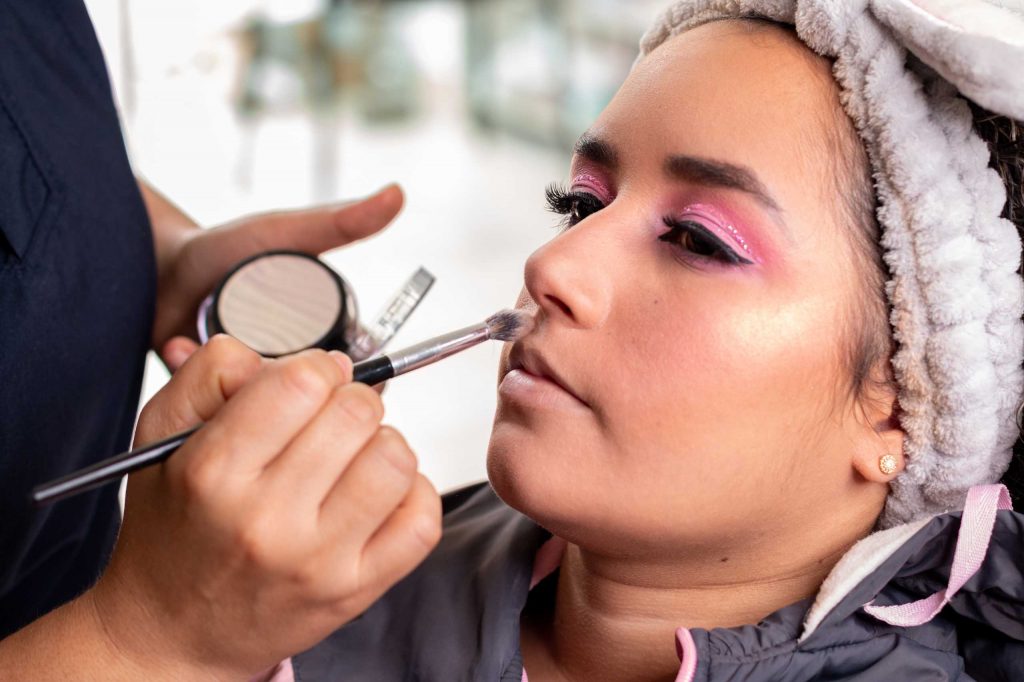It’s not about changing your face — it’s about making it shine its own way
— Why Face Shape Matters
Every face is beautifully unique. Oval, round, heart-shaped, square — each has its own rhythm, structure, and focal points.
Makeup isn’t about forcing symmetry. It’s about understanding shape and using products to balance, highlight, and celebrate what’s already there.
Knowing your client’s (or your own) face shape transforms how you contour, highlight, apply blush — even where you place your brows and eyeshadow.
— How to Identify Face Shape
Before you apply, observe:
• Forehead width
• Cheekbone placement
• Jawline definition
• Length vs. width of the face
Stand in front of a mirror, pull your hair back, and trace your reflection’s outline if needed. What do you see — a long oval? A defined jaw? A wider forehead?
Now let’s dive into techniques for each type.
— Oval Face
Balanced, softly tapered — often seen as the “universal” shape
Goal: Maintain harmony without over-correcting.
Try this:
• Light contour under cheekbones only
• Blush swept along the upper cheeks toward temples
• Highlight across the cheekbones and center of forehead
→ This face suits nearly every eye and lip look — experiment boldly.
— Round Face
Soft features, similar width and height, often youthful
Goal: Add subtle structure and elongation
Try this:
• Contour along temples and under the jawline
• Blush in a diagonal sweep from cheek to upper ear
• Highlight only on top of cheekbones and nose bridge
→ Avoid putting shimmer on the apples of the cheeks — it can add volume.
— Square Face
Strong angles, wide jaw, and forehead
Goal: Soften sharpness, draw focus upward
Try this:
• Contour jawline and temples gently
• Blush placed slightly higher on the cheeks
• Softly blended highlighter on the forehead center and chin
→ Go easy on harsh lines — think soft gradients, not graphic edges.
— Heart-Shaped Face
Wider forehead, pointed chin, strong cheekbones
Goal: Balance width at the top with softness at the bottom
Try this:
• Light contour at the temples and lower cheekbones
• Blush focused on outer cheek area, not too close to the nose
• Highlight on the jawline and chin to add dimension
→ A bright lip draws attention down and balances the shape beautifully.
— Long or Oblong Face
Face length is more noticeable than width
Goal: Create balance horizontally
Try this:
• Contour forehead and chin to visually shorten the length
• Blush applied more “outward” than “upward”
• Highlight across the cheeks, not down the nose
→ Bold lashes or winged eyeliner help draw attention to the center of the face.
— Bonus: Diamond Face
Narrow forehead and jawline, wide cheekbones
Goal: Soften edges, bring warmth to the outer face
Try this:
• Contour below cheekbones only
• Blush placed just above apples of the cheeks
• Highlight the temples and center of the face
→ Avoid overly sculpted looks — glow and light help this shape shine.
— Beyond Shape: Honor the Whole Face
Your client is not just a cheekbone. You’re working with movement, emotion, personality — not geometry.
• Always take lighting into account
• Adapt to mood, outfit, setting
• Ask: How does this person want to feel?
The best makeup artists don’t force rules — they interpret them.
Final Thought
Face shapes are only a guide — a place to start.
The true artistry comes when you see the person, not just their bone structure.
Learn the rules. Practice the placements. Then, create without limits.

